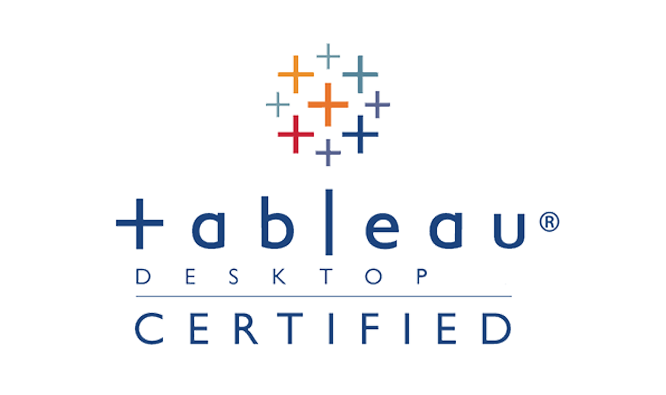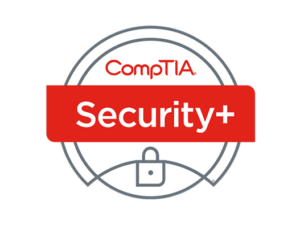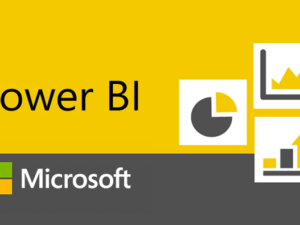- Learn the key concepts of Data Visualization and how data can be transformed by cleaning, splitting, pivoting, and merging using Tableau 10.
- Discuss the architecture of Tableau, establish connection with data sets , perform Joins on the data sets and explore the NEW CROSS JOIN that is now possible with data integration.
- Discover new ways to analyze your data such as, quick highlighting, reference lines, and use the new Clustering feature. Create personalized, dynamic visualizations by using Parameters to take user input and drive the visualization. Discuss good design practices for dashboards and how to make them fully interactive using Actions. Perform extensive hands-on activities using Tableau 10 thereby emphasizing the concepts. This training will help you clear the Tableau Associate Certificate Level Exam.
Tableau Training & Certification
- Description
- Curriculum
- Reviews

During this course, our certified Tableau instructors will help you:
- Learn basics of Data Visualization, establish connection with the data set, perform Join on the data sets.
- Manage extracts and Metadata, perform data granularity on aggregated data.
- Learn about graphs including Bar graphs, Line graphs, Pie charts, Dual axis graphs and Area graphs with dual axis
- Perform sorting, filtering and grouping with your datasets
- Use Trend Lines, Reference Lines, and statistical techniques to describe your data
- Create Dashboards by using different layouts and create stories
- Create basic calculations including string manipulation, basic arithmetic calculations, custom aggregations, date math, logic statements and quick table calculations
- Advance Level of Detail (LOD) problems with multiple use-cases for better clarification
- Get your hands dirty with various heuristic LOD problems
- Learn advance charts such as Waterfall charts, Pareto charts, Gantt Charts, Control Charts, Funnel Charts and Box and Whisker’s plot
- Integrate Tableau with R & Hadoop and combine your visualizations into Interactive Dashboards and publish them to the Web.
Tableau is by far one of the best business intelligence tools available in the market today. After completing Certs Learning’s Tableau training course, you will able to better analyze your business and develop highly insightful information. More than 35,000 companies worldwide have truly transformed the way they uncover insights from data they possess.
Also by 2020, the world is set to generate 50 times the amount of data as in 2011, according to a study by International Data Corporation (IDC).
With this humongous amount of data and real business implications at play, business organizations across the world have the need for an easy to use tool to analyze data and derive actionable insights from it. Tableau helps organizations do exactly this – mining the data and visualizing business opportunities.
The Tableau 10 Training at edureka is for all the professionals who are passionate about business intelligence, data visualization, and data analytics. For example:
- Business Analysts
- Business Intelligence Manager
- Statisticians and Analysts
- Data Scientists
- Project Managers
Tableau is a good option for your career. Tableau is emerging as one of the hottest trends in business intelligence in 2016. The data visualization tool has been gaining popularity in companies big and small, and hence, the demand for Tableau experts in on the surge. If you go by google trends, it seems there can be no better time than “now” to learn tableau and get it on your resume. We at Certs Learning offer the best Tableau on demand training with 12K+ satisfied learners.
There are no pre-requisites for the Tableau training course.
Knowledge of R language and basic concepts of data analysis would be an advantage, but not necessary.
-
1Introduction to Data Visualization
Goal : Give a brief idea of data visualization and introduce Tableau 10
Objectives:
- Identify the prerequisites, goal, objectives, methodology, material, and agenda for the course
- Discuss the basic of Data Visualization
- Get a brief idea about Tableau, establish connection with the dataset, perform Joins operation on the data set
Topics:
- Data Visualization
- Introducing Tableau 10.0
- Establishing Connection
- Joins and Union
- Data Blending
Hands On:
- Establishing connection with the files, Introducing important UI components (ShowMe, Fit Axes)
- Perform Cross Joins between the dataset
-
2Visual Analytics
Goal : Learn to manage your dataset and analyze things visually with the help of Marks Card and “highlighting” feature.
Objectives:
- Manage extracts and metadata (by creating hierarchy and folders)
- Describe what is Visual Analytics, why to use it, and it’s various scopes
- Explain aggregating and disaggregating data and how to implement data granularity using marks card on aggregated data
- Describe what is highlighting, with the help of a use-case
- Illustrate basic graphs including bar graph, line graph, pie chart, dual axis graph, and area graph with dual axis
Topics:
- Managing Extracts
- Managing Metadata
- Visual Analytics
- Data Granularity using Marks Card
- Highlighting
- Introduction to basic graphs
Hands On:
- Creating Extracts, Hierarchy, Folders
- All the features of Marks Card Shelve with use case provided
- Power of Highlighting in the visualization using the Use-case
- How to create basic graphs in Tableau10.x
-
3Visual Analytics in depth I
Goal : This module presents to you the granular content of Visual analytics, covering various techniques to perform sorting, filtering and grouping on the dataset.
Objectives:
- Perform sorting techniques including quicksort, using measures, using header and legend, and sorting using pill with the help of a use case.
- Master yourself into various filtering techniques such as Parametrized filtering, Quick Filter, Context Filter. Learn about various filtering option available with the help of use case and different scenarios.
- Illustrate grouping using data-window, visual grouping, and Calculated Grouping (Static and Dynamic).
- Illustrate some more graphical visualization including Heat Map, Circle Plot, Scatter Plot, and Tree Maps.
Topics:
- Sorting.
- Filtering.
- Grouping
- Graphical Visualization
Hands On:
- Quick Sort, Sorting using measure, Sorting using header and legends, sorting using pill(use-case).
- Filtering Use cases covering different options (General, Wildcard, Conditional).
- Interactive Filter, Quick Filter, Context Filter.
- Grouping using Data Window, Visual Grouping, Calculated Grouping (Static and Dynamic).
-
4Visual Analytics in depth II
Goal : This module presents to you Visual analytics in a more granular manner thereby letting you to dive deep into the content. It covers various advanced techniques of analyzing data including, forecasting, trend lines, reference lines, clustering, parametrized concepts, and creating sets.
Objectives:
- Explain the basic concepts of sets followed by Creating sets using Marks Card, computation sets and combined sets
- Describe the concepts of forecasting with the help of Forecasting problem as a use-case
- Discuss the basic concept of clustering in Tableau
- Add Trend lines and reference line to your visualization
- Discuss about Parameter in depth using Sets and Filter
Topics:
- Sets
- Forecasting
- Clustering
- Trend Lines.
- Reference Lines.
- Parameters
Hands On:
- Create sets using marks card, Computation sets, and Combined sets
- Forecasting using Precise Range
- Methods of clustering
- Adding trend line and reference line (along with various options available for them)
- Parameter using sets and filter
-
5Dashboard and Stories
Goal : Learn all about Dashboards and Stories in Tableau.
Objectives:
- Describe the basic concepts of Dashboard and its UI.
- Build a dashboard by adding sheets and object into it
- Modify the view and layout.
- Edit your dashboard, how it should appear on phones or tablets.
- Create an interactive dashboard using actions (filter, highlighting, URL).
- Create stories for your Visualization and Dashboards.
Topics:
- Introduction to Dashboard.
- Creating a Dashboard Layout.
- Designing Dashboard for Devices.
- Dashboard Interaction - Using Action.
- Introduction to Story Point.
Hands On:
- Creating Dashboard and learning its UI component.
- Changing the layout of the dashboard.
- Using Device Designer to create dashboard for devices.
- Create an interactive dashboard using actions (Filter, Highlight, URL).
- Creating story with dashboard.
-
6Mapping
Goal: This module helps you in understanding mapping in detail, editing unrecognized and ambiguous location, and creating customized geocoding. Learn about polygon map and Web Mapping Service, and finally, add background images with self-generated coordinates.
Objectives:
- Map the coordinates on the map, plot geographic data, and use a layered view to get the street view of the area.
- Edit the ambiguous and unrecognized location plotted on the map.
- Customize territory on a polygon map.
- Connect to the WMS Server, use a WMS background map and saving it.
- Add a background image and generate its coordinate and plot the points.
Topics:
- Introduction to Maps.
- Editing Unrecognized Locations.
- Custom Geocoding.
- Polygon Maps.
- Web Mapping Services.
- Background Images.
Hands-On:
- Plot the coordinate points on the map, plotting the geographic data, Street View using the layered view.
- Editing Unrecognized and ambiguous location
- Custom Geocoding.
- Creating a custom territory, building a polygon map.
- Establishing a connection with the WMS Server a WMS background map and saving it.
- Adding a background image and generate coordinates and finally plotting points.
-
7Calculation
Goal: This module will help you in creating basic calculations including string manipulation, basic arithmetic calculations, date math, logic statements and quick table calculations. Along with this, you will be also introduced to LOD expressions with the help of use cases.
Objectives:
- Perform Calculations using various types of functions such as Number, String, Date, Logical, and Aggregate.
- In addition, you will get to know about Quick Table Calculation.
- Cover the following LOD expressions – Fixed, Included, and Excluded.
Topics:
- Introduction to Calculation: Number Functions, String Functions, Date Functions, Logical Functions, Aggregate Functions.
- Introduction to Table Calculation.
- Introduction to LOD expression: Fixed LOD, Included LOD, Excluded LOD
Hands-On:
- All Functions (Number, String, Date, Logical, Aggregate)
- Table Calculation.
- LOD expressions.
-
8LOD Problem Sets
Goal: This module will explain the scenarios where you can implement LOD expressions. This is showcased with the help of a set of problems.
Objectives:
- Tackle complex scenarios by using LOD expressions.
Hands-On:
- Use Case I - Count Customer by Order.
- Use Case II - Profit per Business Day.
- Use Case III - Comparative Sales.
- Use Case IV - Profit Vs Target
- Use Case V - Finding the second order date.
- Use Case VI - Cohort Analysis
-
9Charts
Goal : Plot various types of Charts using Tableau 10 and have extensive hands-on on industry use cases.
Topics :
- Box and Whisker`s Plots
- Gantt Charts
- Waterfall Charts
- Pareto Charts
- Control Charts
- Funnel Charts
Hands On:
- Extensive hands-on on the above topics
-
10Integrating Tableau with R and Hadoop
Goal: This module introduces you to the concept of Big Data, Hadoop, and R. You discuss the integration between Tableau and R and finally publish your workbook on Tableau Server.
Objectives:
- You will know the basics of Big Data, Hadoop, and R.
- You will discuss the integration between Hadoop and R and will integrate R with Tableau.
- In addition, you will get to publish your workbook on Tableau Server.
Topics:
- Introduction to Big Data
- Introduction to Hadoop
- Introduction to R
- Integration among R and Hadoop
- Calculating measure using R
- Integrating Tableau with R
- Integrated Visualization using Tableau
Hands-On:
- Installing Rserve package in R
- Integrating Tableau and R
- Publishing your workbook on Tableau Server.







